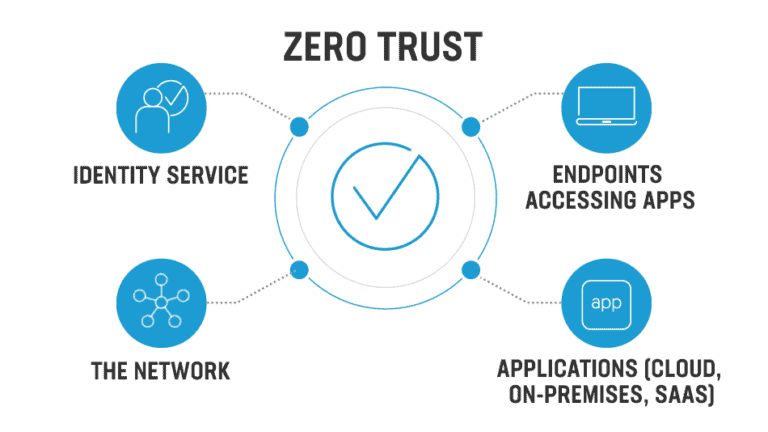Security and Compliance in Power Platform Development: Safeguarding Business Data
In today’s data-driven landscape, ensuring the security and compliance of sensitive information is paramount.
As organisations harness the capabilities of Microsoft Power Platform development to drive innovation and efficiency, it’s essential to prioritise the safeguarding of data. This article serves as a comprehensive guide for businesses, addressing the security concerns associated with Power Platform development and providing strategies to ensure protection and compliance with regulations.
The Significance of Security and Compliance
Power Platform, comprising Power Apps, Power Automate, Power BI, and Power Virtual Agents, empowers businesses to create custom applications, automate processes, analyse data, and facilitate AI-driven conversations. However, with great power comes great responsibility, and the responsibility here is to maintain the integrity, confidentiality, and availability of the data being processed and stored.
Security breaches can lead to financial losses, reputational damage, and legal implications. Additionally, in an era of increasing regulations, organisations must adhere to stringent compliance requirements or risk severe penalties. Let’s delve into strategies for ensuring the security and compliance of Power Platform development.
1. Comprehensive Data Classification: Know What You’re Handling
Before embarking on Power Platform development, businesses must conduct a thorough data classification. Identify the types of information being collected, processed, and stored—whether it’s personal, financial, or confidential. This classification lays the foundation for implementing appropriate security measures based on the sensitivity of the data.
2. Role-Based Access Control: Limiting Access
Implement role-based access control (RBAC) to restrict access to data and functionalities based on users’ roles and responsibilities. This ensures that only authorised individuals can access and modify sensitive information, reducing the risk of unauthorised access or data leakage.
3. Data Encryption: Protecting Data at Rest and in Transit
Employ encryption mechanisms to safeguard data both at rest and in transit. Encrypting data stored in databases and transmitted between users and the platform adds an extra layer of security, rendering it unreadable to unauthorised parties.
4. Multi-Factor Authentication (MFA): Strengthening User Authentication
Require users to undergo multi-factor authentication (MFA) before accessing Power Platform applications. MFA combines multiple authentication layers, such as passwords and biometric data, to ensure that only legitimate users gain access.
5. Regular Security Audits: Identifying Vulnerabilities
Conduct regular security audits and vulnerability assessments to identify potential weaknesses in your Power Platform applications. Addressing vulnerabilities promptly helps prevent security breaches before they occur.
Utilise Data Loss Prevention (DLP) policies to monitor and control the sharing of sensitive information within Power Platform applications. These policies prevent accidental or intentional data leaks by monitoring content and enforcing appropriate actions.
7. Compliance with Regulations: Meeting Industry Standards
Ensure that your Power Platform applications comply with industry-specific regulations. Staying compliant not only avoids legal consequences but also fosters customer trust.
8. Secure Development Practices: Writing Secure Code
Adopt secure development practices when creating custom Power Apps. Follow coding standards, perform code reviews, and conduct security testing to identify and address vulnerabilities in the development phase.
9. Monitoring and Incident Response: Detecting and Responding to Threats
Implement robust monitoring tools that provide real-time insights into user activities and application behaviour. With proper monitoring in place, you can detect unusual or potential threats and respond swiftly to mitigate risks.
10. Employee Training and Awareness: Building a Security Culture
Educate employees about security best practices and the importance of data protection. A well-informed workforce is the first line of defence against security breaches caused by human error.
In a rapidly evolving digital landscape where data breaches and compliance violations can have far-reaching consequences, the security and compliance of Power Platform development cannot be overemphasized. By implementing robust security measures, adhering to industry regulations, and fostering a culture of awareness and accountability, businesses can confidently harness the potential of the platform while mitigating risks.
Striking the balance between innovation and security is not just a business imperative—it’s a commitment to protecting both your company’s reputation and the trust of those who rely on your services.
As the platform continues to revolutionise business processes, let its impact be synonymous with a fortified commitment to data protection and regulatory adherence.
Building Trustworthy Digital Environments
The Microsoft Power Platform presents immense opportunities for businesses to innovate, streamline processes, and analyse data. However, these benefits must be approached with a strong commitment to security and compliance. By following the strategies outlined in this article, businesses can ensure that their development efforts are aligned with best practices for data protection, risk mitigation and regulatory compliance.
A secure and compliant Power Platform not only safeguards sensitive information but also fosters trust among customers, partners, and stakeholders.
Remember, security is an ongoing endeavour, and staying vigilant against emerging threats and evolving regulations is essential to maintaining a resilient and trustworthy digital environment.
As you leverage the capabilities of the Power Platform, let security and compliance serve as the foundation upon which you build a robust and successful business ecosystem.





